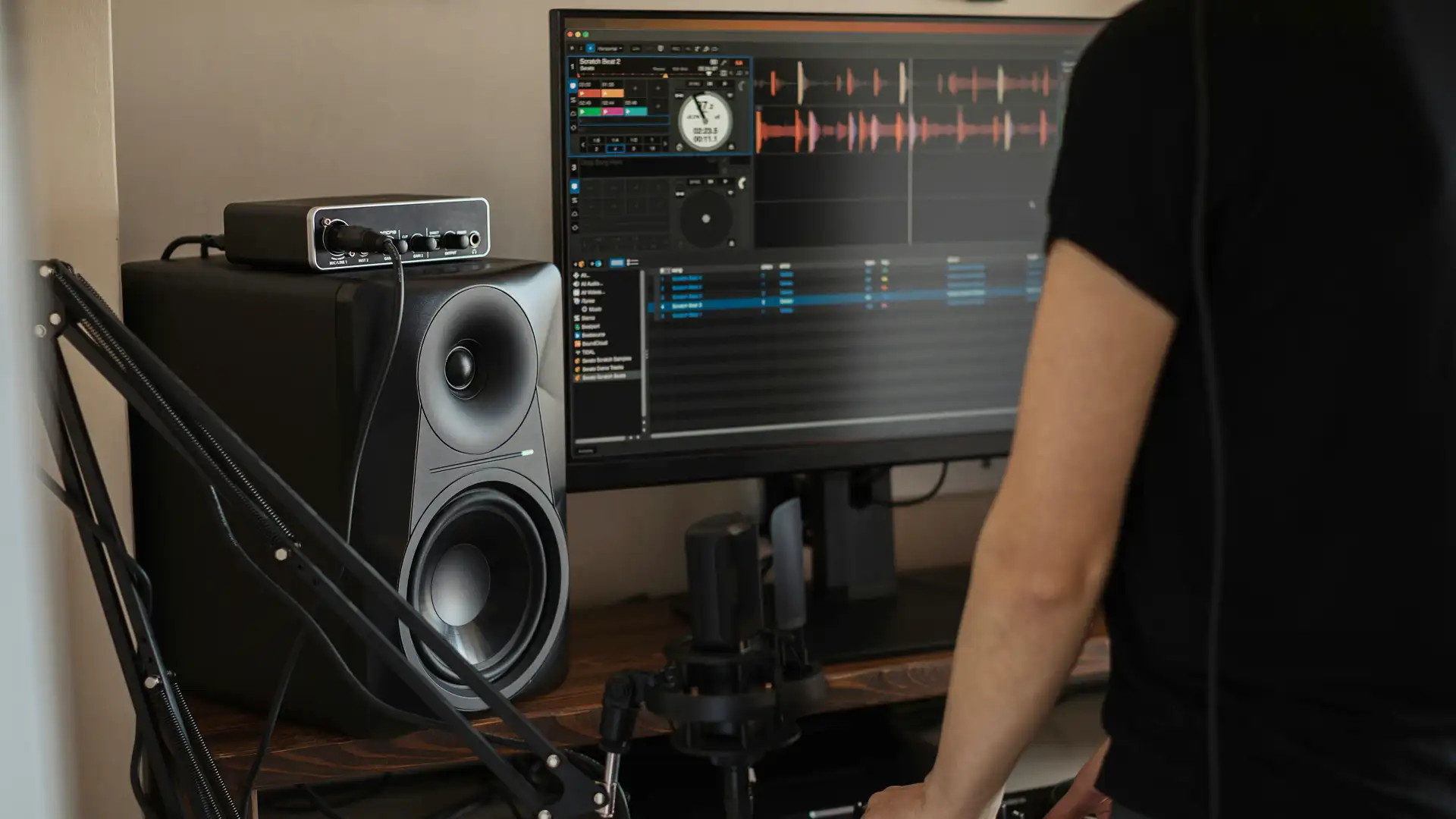
High-fidelity, commonly known as Hi-Fi, refers to the high-quality reproduction of sound. Its primary goal is to recreate an original audio recording with the utmost accuracy, ensuring that what the listener hears is as close as possible to the artist’s original performance in the studio or on stage. Technically, this means the audio is characterized by extremely low noise, minimal distortion, and a flat or neutral frequency response, where the equipment does not unnaturally color or alter the sound.
For audio lovers, a true Hi-Fi system delivers a more detailed, immersive, and emotionally engaging listening experience, revealing nuances in the music that are often lost on standard playback devices.
The Core Principles of High-Fidelity Audio

To truly understand what constitutes Hi-Fi, it’s essential to move beyond the simple idea of good sound and explore the fundamental elements that audiophiles and engineers strive to perfect. These principles define the auditory experience, separating a standard playback system from one that delivers true high-fidelity. While the technology has evolved, these core tenets remain the benchmark for quality.
Minimal Noise and Distortion
At the heart of high-fidelity is the absence of unwanted artifacts. This means a signal that is clean and pure, free from the subtle hiss or hum that can plague lower-quality equipment. A key concept here is dynamic range—the difference between the quietest and loudest sounds a system can reproduce. In a Hi-Fi setup, the quietest passages of a song should be met with near-total silence, not a layer of electronic white noise.
Conversely, the most powerful crescendos should be delivered with clarity and force, without the sound breaking up or becoming harsh, a phenomenon known as distortion. Achieving this requires high-quality components capable of handling the full breadth of a recording’s dynamics without adding their own sonic signature.
Expansive Soundstage and Instrument Separation
A superior system creates an immersive, three-dimensional soundstage that extends beyond the physical location of the speakers. It crafts the illusion of width, depth, and height, making it feel as if the musicians are performing in the room with you.
Within this soundstage, excellent instrument separation is crucial. This is the ability to distinctly hear each individual instrument and vocalist in their own space within the mix. You should be able to follow a specific bassline, pick out a subtle harmony vocal, or hear the unique reverberation of a snare drum, rather than having all the sounds blend into a single, flat plane. This level of detail and spatial realism is a hallmark of a true Hi-Fi experience.
Tonal Balance
Tonal balance refers to the equilibrium between bass (low frequencies), midrange (middle frequencies), and treble (high frequencies). The ideal Hi-Fi system aims for a neutral or “flat” frequency response, meaning it doesn’t artificially boost or cut any part of the audio spectrum. This ensures the music is reproduced as accurately as possible to the original master recording. When the balance is off, the entire character of the music changes.
Too much bass can make a track sound muddy or boomy, obscuring finer details. Too much treble can make it sound “tinny,” harsh, or fatiguing to listen to. A well-balanced system delivers tight, articulate bass, a clear and present midrange where vocals and core instruments reside, and crisp, detailed highs without any sibilance or shrillness.
The Technical Foundation: Unpacking Digital Audio Quality
While the principles of Hi-Fi are rooted in listening experience, they are built upon a technical foundation, especially in the digital age. Most music today is consumed through digital formats, and understanding the key metrics of digital audio—sample rate and bit depth—is essential to grasping what makes a recording “high-resolution” and suitable for a Hi-Fi system. These specifications determine how much of the original analog soundwave is captured and preserved in a digital file.
Sample Rate
Sample rate refers to the number of times per second that a “snapshot” of the original analog audio waveform is taken to create the digital signal. Measured in kilohertz (kHz), a higher sample rate means more snapshots are taken, resulting in a more accurate and detailed representation of the original sound. The standard for Compact Discs (CDs) is 44.1 kHz, or 44,100 samples per second. This was long considered sufficient as it covers the full range of human hearing, which tops out around 20 kHz. However, high-resolution audio files often use higher sample rates, such as 96 kHz or 192 kHz, to capture even more nuanced information and frequencies beyond the typical human range, which some engineers argue contributes to a more natural and realistic sound reproduction.
Bit Depth

If sample rate is the number of snapshots, bit depth determines the amount of information contained within each of those snapshots. It defines the dynamic range of the recording. Standard CD-quality audio uses a bit depth of 16-bit, which allows for 65,536 distinct amplitude values. This provides a theoretical dynamic range of about 96 decibels (dB), which is quite substantial. High-resolution audio, however, typically uses 24-bit depth, which expands the number of values to over 16.7 million. This exponential increase results in a much wider dynamic range and a significantly lower noise floor, allowing for greater detail, more subtle nuances in quiet passages, and a more effortless, open sound.
Understanding Audio File Formats
The combination of sample rate and bit depth determines the overall quality, which is then stored in a specific file format. These formats are critical to preserving fidelity.
- Uncompressed (e.g., WAV, AIFF): These formats are the raw, unaltered data from the digital conversion, equivalent to a master recording. They offer perfect quality but result in very large file sizes.
- Lossless Compressed (e.g., FLAC, ALAC): These formats are the gold standard for many audiophiles. They use compression algorithms to reduce file size (typically by 30-50%) without discarding any of the original audio data. When unzipped for playback, the file is a bit-perfect copy of the original, offering the same quality as WAV or AIFF in a more manageable size.
- Lossy Compressed (e.g., MP3, AAC): These formats achieve much smaller file sizes by permanently removing audio data that the compression algorithm deems least audible to the human ear. While efficient for streaming and storage, this process results in an irreversible loss of fidelity. Playing a 320 kbps MP3 on a high-end Hi-Fi system will expose the limitations of the format, often revealing a lack of detail, a flatter soundstage, and less dynamic impact compared to its lossless counterpart.
Assembling Your Hi-Fi System

Building a Hi-Fi system is about selecting and matching components that work together to achieve the goal of faithful sound reproduction. While one can spend a lifetime and a fortune pursuing the ultimate setup, a basic high-fidelity system is built around a few essential, high-quality components.
The Source: Where Your Music Begins
Everything starts with the source, the device that plays your music. The quality of your entire system is limited by the quality of the signal it receives. Traditional sources include high-quality turntables for vinyl records and CD players or transports. In the modern era, the source is often a digital media player or streamer. To maintain fidelity, it’s crucial that this device can handle and transmit high-resolution lossless files (like FLAC or ALAC) from your personal library or from a high-quality streaming service that offers a Hi-Fi tier, such as Tidal, Qobuz, or Apple Music.
The Brains: DACs and Amplifiers
Once the signal leaves the source, it must be processed. If the source is digital, it first goes to a Digital-to-Analog Converter (DAC). The DAC’s job is to translate the digital ones and zeros from the audio file into an analog electrical signal that the amplifier and speakers can understand. While many devices have built-in DACs, dedicated external DACs are a popular upgrade for audiophiles as they often perform this critical conversion with greater precision and less noise.
Next, this weak analog signal travels to an amplifier. The amplifier has two main jobs: acting as a preamplifier to manage inputs and control volume, and as a power amplifier to boost the signal with enough energy to physically drive the speakers. These can be separate components (a preamp and a power amp) for maximum flexibility or combined into a single unit called an integrated amplifier, which is a common and convenient choice for many high-quality systems.
The Voice: Speakers and Room Acoustics
Finally, the amplified signal reaches the speakers, which are arguably the most critical component in determining the final sound you hear. Speakers are transducers that convert the electrical energy from the amplifier into the mechanical energy of sound waves. A pair of well-designed speakers will accurately reproduce the full frequency range, create a convincing stereo image, and reveal the fine details of a recording without adding their own coloration. For an even deeper bass response, a dedicated subwoofer can be added to handle the lowest frequencies, freeing up the main speakers to focus on the mids and highs.
The system is not complete, however, without considering the listening room itself. The acoustics of your room—its size, shape, and furnishings—have a profound impact on the sound. Optimizing speaker placement and using simple acoustic treatments like curtains or bookshelves can dramatically improve the performance of even the most sophisticated Hi-Fi system, making it the final, crucial component in your pursuit of high-fidelity sound.
The Modern Alternative: All-in-One System
For those who value simplicity, convenience, and a smaller footprint without sacrificing quality, the All-in-One system has become an incredibly popular trend in modern Hi-Fi. Also known as streaming amplifiers or just-add-speakers systems, these devices integrate the source , a DAC, and an amplifier into a single, elegant box.
This approach significantly reduces clutter and the complexity of matching separate components. A user can simply connect a pair of passive speakers, link the unit to their home Wi-Fi, and instantly access a world of music from streaming services, internet radio, or a local digital library, all controlled via a smartphone app. While the dedicated-component path offers greater potential for system-tweaking, today’s high-quality all-in-one systems deliver a compelling, high-fidelity experience that is both accessible and sophisticated.



